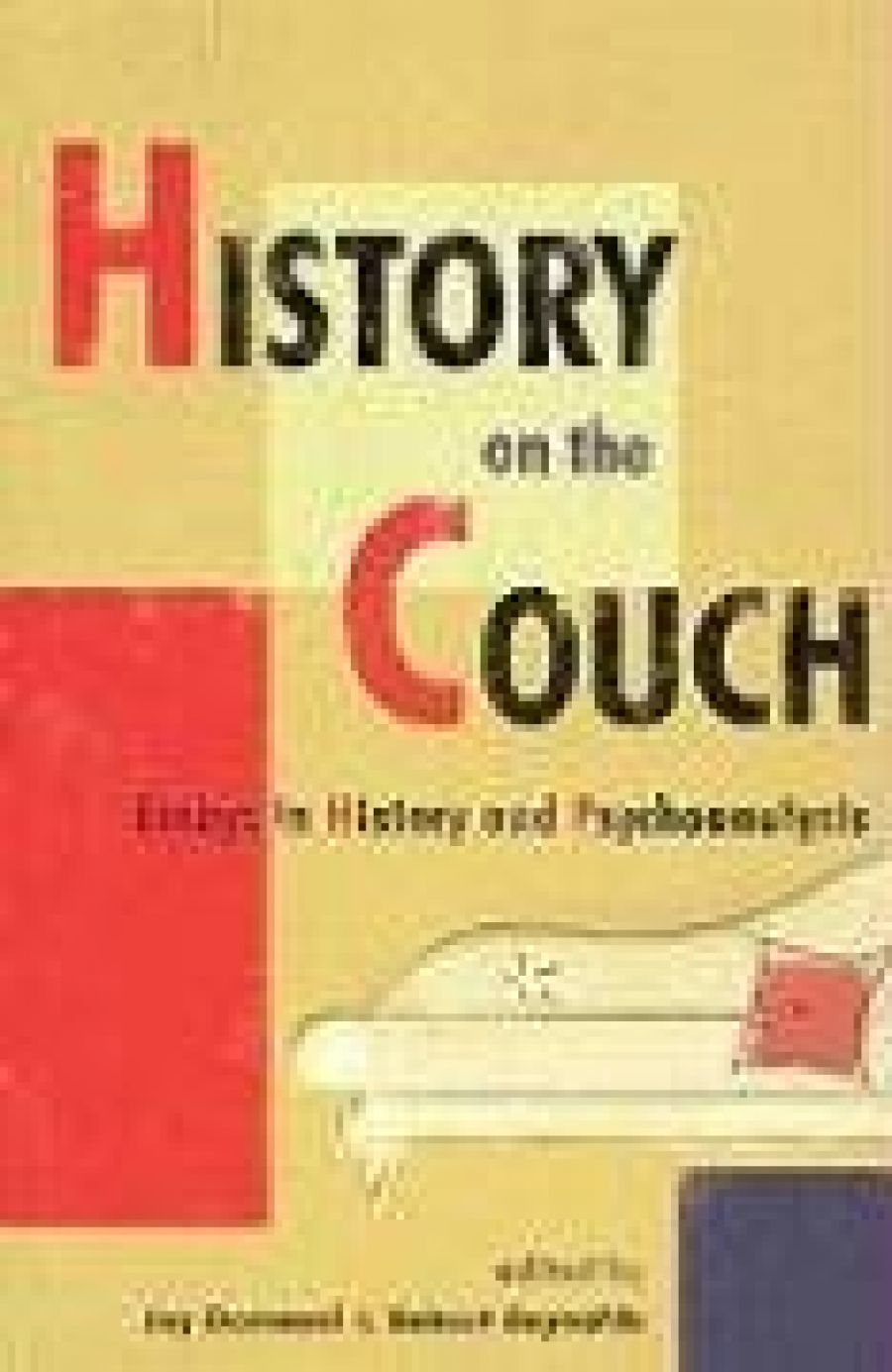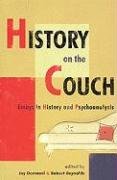
- Free Article: No
- Contents Category: Reviews
- Review Article: Yes
- Article Title: Cracks and Crevices
- Online Only: No
- Custom Highlight Text:
Writing history combines empiricism, theoretical scaffolding and historical imagination. Like Charles Dickens’s Mr Gradgrind in Hard Times, historians are simultaneously concerned with ‘facts’ – their definition, selection and analysis – and captivated by Steven Greenblatt’s ‘desire to speak with the dead’. Historians, drawing on psychoanalysis, have attempted to expose relationships between the inner and outer worlds of individuals and groups in order to write the history of emotions. Peter Gay’s Freud for Historians (1985) clarified that psychoanalysis provided historians not with a ‘handbook of recipes’ but rather with ‘a style of seeing the past’. It allowed historians not only to explore and analyse those aspects of the past the individual and/or nation chose to remember and celebrate, but to interrogate the inner world by examining those aspects of the past they chose to rewrite, amend, reconfigure, deny or forget. Sigmund Freud (1856–1939) has been revered and reviled, and some might consider it brave to tackle the evolution of psychoanalytic applications in an historical context in the light of much debunking by feminist historians among many other ‘others’.
- Book 1 Title: History on the Couch
- Book 1 Subtitle: Essays in History and Psychoanalysis
- Book 1 Biblio: Melbourne University Publishing, $34.95 pb, 248 pp
- Book 1 Cover Small (400 x 600):

- Book 1 Cover (800 x 1200):

Joy Damousi and Robert Reynolds tackle this history by exploring the intersection of the inner and outer worlds of the individual, identity and society in this edited collection of essays. Each essay, in different ways, conforms to the broad methodological umbrella of psychoanalysis, and each states its theoretical position. This thought-provoking collection offers a variety of trajectories on the issues and controversies surrounding history and the use of psychoanalysis as a research method grounded in an historical context. The essays cover ‘a broad range of approaches, concepts, categories and frameworks’ and display the diversity and fragmentation of ‘what is collectively termed the “psychoanalytic”‘. Damousi and Reynolds add: ‘[t]he aim of this collection is to highlight the eclectic and diverse application of aspects of psychoanalytic thought within concepts of history and the past which include issues relating to both the individual and the collective.’ In this, it is successful.
Psychoanalysis is firmly part of Western popular culture. Freud, his writings, his followers, as well as the psychoanalytic schools of Carl Jung (1875–1961) and Alfred Adler (1870–1937), have all influenced Western modern intellectual thought in profound ways. While Freud’s theories have been challenged, the validity of emotion and the unconscious as forms of historical enquiry remain. Damousi and Reynolds observe hat Freud’s theories are about much more than sex and childhood experiences, and ‘psychoanalysis in the twenty-first century is a very broad church, and its congregation fractious’.
The collection is bookended by an introduction by Damousi and Reynolds, which could have been expanded, and a conclusion by John Cash. Fifteen essays are divided into four main sections: ‘Analysing modernity’; ‘Biography and identities’; ‘The psyche of national identities’; and ‘Text and trauma’. Part One comprises five essays. Catharine Coleborne’s teases out the problematic nature of accessing the inner worlds of nineteenth-century asylum inmates in Victoria. Damousi explores dreams, inner life and the impact of psychoanalysis across the sexual, philosophical and therapeutic realms in Australia in the 1920s and 1930s, while kylie valentine provides an exegesis on the real or imagined demise of psychoanalysis and modernism. Reynolds engagingly revisits the inner and outer world of Freud, ‘fisting’ and queer theory, and Maggie Nolan sees colonisation not as civilisation but as an ‘enactment of violent fantasies of suppression and domination that are peculiar to the colonial psyche’.
Part Two explores biography and identities, with essays by Judith Brett on the task of the political biographer, John Rickard’s reading of the Victorian family, Bain Attwood’s intimate recovery of the ‘deeply private emotions’ invested in Donald Thomson’s advocacy for Aboriginal rights, and Christopher E. Forth’s interesting exploration of health, hygiene and the bodily ego in Henri-Frédéric Amiel’s Journal Intime. Part Three explores the psyche of national identities, with compelling essays on broader theoretical considerations in an Australian context by Miriam Dixson and Marjorie O’Loughlin, while Nicola Nixon’s excellent essay explores the Yugoslavian conflict of the 1990s. Part Four explores text and trauma, and includes Christina Twomey’s examination of writings by Australian civilians interned by the Japanese during World War II, Esther Faye’s Lacanian perspective on the Jewish/German second generation reading of the Holocaust, and Rose Lucas’s exploration of the negotiated roles of reader, writer, characters and the interplay of the inner and outer worlds of historical fiction in Margaret Atwood’s Alias Grace.
While psychoanalysis has influenced other disciplines without major controversy, history has remained sceptical. This book will not shake the sceptics’ distrust of Freud, as you ‘cannot psychoanalyse the dead’. But the evolution of Freudian theory has not been static, and nor is it the same as Freud’s psychoanalytic therapy. These essays explore the legacy of Freud and the post-Freudian evolution of ideas by Erik Erickson, Anna Freud, Melanie Klein et al. with varying degrees of success. Many of the essays read easily, while some are opaque because of their theoretical foregrounding. These essays ask us questions we may not have thought of, nor had the courage to ask or even answer. The best essays in the collection provide a complex rereading of historical events through the lens of psychoanalysis. They show us the value of the evidence to be found between the ‘cracks and crevices’ of the past, and reveal the history of the unconscious and its role in forming individual and collective histories.


Comments powered by CComment